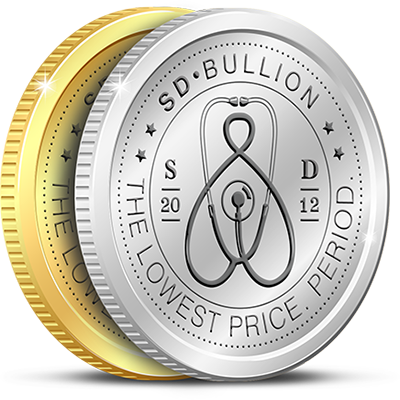Precious Metals Surge Amid Trade & Monetary Policy Shifts: Gold and Silver Prices Skyrocket
The precious metals market is experiencing high volatility today, with both gold and silver prices making significant moves as global trade policies and central bank actions shake up the markets.
This morning, gold is breaking out to new all-time highs, rising by $39 to top $2,804 per ounce. At the same time, silver continues its upward march, gaining another 77 cents to reach $31.73 per ounce. These price surges come on the back of key developments in trade policy and central bank actions, which are having a profound impact on market sentiment and metal prices.
The Role of Trade Policy and Potential Tariffs
Much of the recent action in the precious metals market has been driven by trade policy, particularly the threat of import tariffs from the U.S. government. President Trump's ongoing rhetoric about imposing tariffs on imports has triggered a scramble among institutional investors to move gold and silver bullion into the United States before potential tariffs are enacted. With uncertainty surrounding the U.S.'s next moves, bullion traders are moving metals into U.S. markets at a rapid pace, contributing to price rises in both gold and silver.
In fact, a short squeeze may be unfolding at the COMEX, the world's largest exchange for metals futures. Some traders are finding it difficult to source metal to fulfill contracts, leading to a rise in the demand for physical bullion and a subsequent increase in prices. A significant shortage of supply may drive prices even higher in the coming weeks, particularly if tariffs are indeed imposed.


Central Bank Policies Driving Safe-Haven Demand
Another major factor contributing to the rise in precious metal prices is monetary policy. Over the past 45 days, the institutional gold and silver markets have been highly volatile, and this is largely due to actions from central banks, especially the Federal Reserve. As Trump has openly criticized the Fed for its policies, his calls for lower interest rates have stirred uncertainty in the broader economy, fueling demand for gold as a safe-haven asset. This uncertainty was evident last Friday when more than 10 tons of gold were moved into the world's largest gold ETF, signaling a strong desire to hedge against potential economic instability.
Silver is also benefiting from this environment. Analysts have warned that the silver market is severely underpriced, with potential explosive upside as traders react to the looming tariff deadline for Canada and Mexico. TD Commodities recently highlighted that silver markets are especially vulnerable to significant price swings, making it a potentially lucrative market to watch.
Global Economic Uncertainty and the ECB's Latest Move
On the global stage, the European Central Bank (ECB) has also made moves to ease monetary policy, cutting interest rates by 25 basis points in its fifth rate cut since last June. ECB President Christine Lagarde has signaled that the euro area economy is expected to remain weak in the near term, adding to the uncertainty surrounding the global economy. With the ECB easing policy while the U.S. grapples with trade and monetary decisions, the demand for precious metals as a hedge against this instability has been amplified.
The Tariff Saga: A Two-Stage Approach
In the U.S., the government has unveiled a two-stage tariff plan that may add further volatility to the precious metals market. The first phase of tariffs is expected to target Canada and Mexico within days, with broader tariffs to follow later in the spring. These tariffs are partially driven by the U.S.'s concerns about illegal drugs entering the country from its northern border, but the threat of a cross-border trade war is adding fuel to the fire. As officials scramble to finalize tariff decisions, precious metals are benefiting from the heightened uncertainty and fear of economic disruption.
Continued Market Instability
With all these factors coming into play—trade tensions, potential tariffs, monetary policy shifts, and rising institutional demand—the precious metals market is likely to continue facing volatility. The uncertainty surrounding trade policies and central bank actions suggests that the upward trend in gold and silver prices is far from over.
As these developments unfold, traders and market watchers are closely monitoring the potential for further price movements in response to changes in trade and monetary policies. The market’s reactions to these ongoing events could have far-reaching consequences for the precious metals industry in the coming weeks.


















